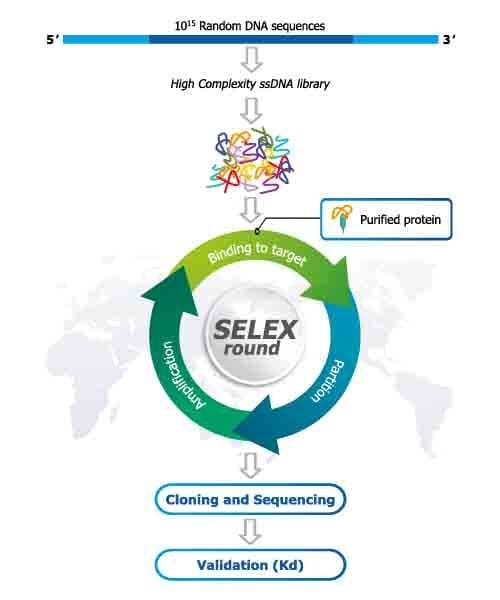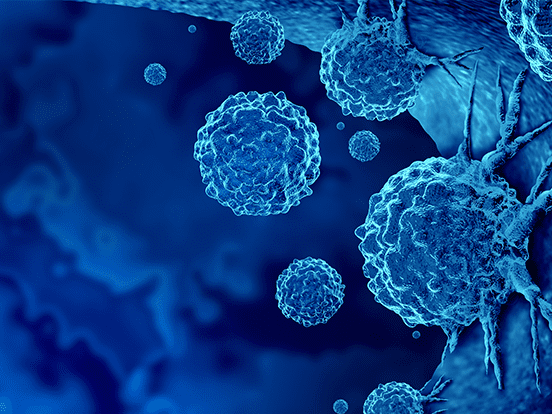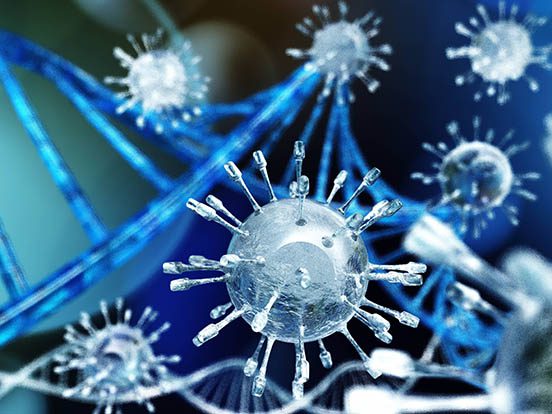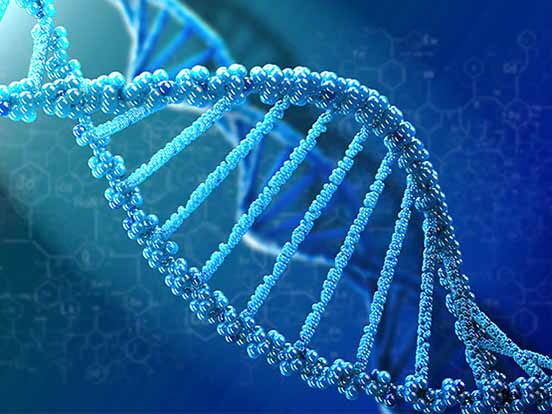
Aptamers
Easily identify specific targets with these antibody alternatives
Aptamers are oligonucleotides or peptides that bind to a specific target molecule with high specificity and affinity. Although occurring naturally as part of a riboswitch, aptamers can also be engineered through repeated rounds of in vitro selection, and are able to bind to various molecular targets such as small molecules, proteins, nucleic acids, and cells.
See all Aptamers
Aptamers vs. Antibodies
Aptamers are extremely useful in a range of biotechnological and therapeutic applications, and offer many advantages over antibodies:
| Aptamer | Antibody | |
|---|---|---|
| Production | Chemical synthesis | Cell culture and need for animals |
| Discovery time | 8 weeks | ̴ 6 months |
| Stability | Stable in harsh conditions | Potential loss of function in harsh conditions |
| Assays | No secondary reagent is needed | Secondary antibody is needed |
| Modification | Easy to chemically modify | Difficult to chemically modify |
| Size | Small size (<30KDa) | Large size ( ̴ 150KDa) |
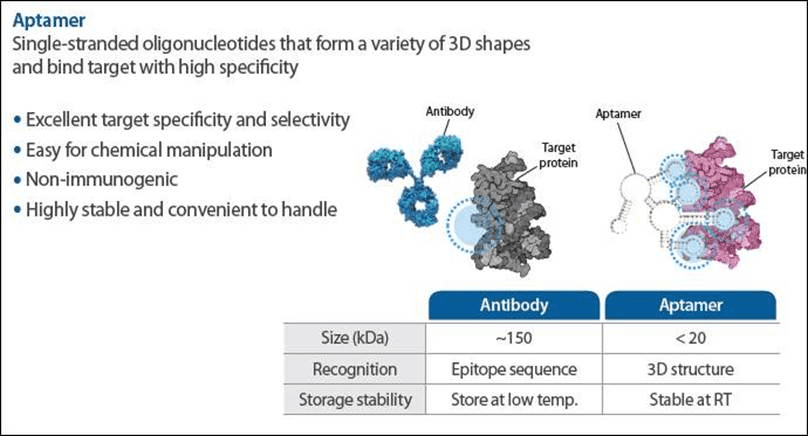
Aptamer Identification
The unique secondary and tertiary structures of aptamers provide the specificity to detect even small structural changes in the target molecule, including the presence or absence of methyl or hydroxyl groups or differences in enantiomeric configurations.
Aptamers that bind specific targets are identified through a process known as Systematic Evolution of Ligands by Exponential enrichment (SELEX) in which binding molecules are selected from a large and diverse library of nucleic acids (either DNAs or RNAs). In this process, the nucleic acid library is incubated with the target molecule. Non-binding nucleic acids are then washed away, leaving behind only the molecules that have a capacity to bind to the target molecule.
The nucleic acids that are not washed away are then used to create a new library of nucleic acids that is enriched for the subset that binds the desired target. Repeating this selection-cycle on each subsequent library with increasing stringency of binding (e.g. lower concentration of target), ensures that nucleic acids that bind to the target with both high specificity and high affinity are enriched.
Available Aptamer Targets
| Target Proteins (human) | Kd(nM) | Target Proteins (human) | Kd(nM) |
|---|---|---|---|
| ACVR1A / ALK-2 | 35 | L-Selectin / CD62L | 4.57 |
| ACVR1B / ALK-4 / Actin RIB / SKR2 | 15 | MERTK / MER | 8.82 |
| ACVR2A / Act R-IIa | 1.41 | MPL / CD110 / TpoR | 1.81 |
| ACVRL1 | 2.09 | Mre11 & Rad50* | 0.17 |
| Akt1 / PKB alpha* | 0.5 | NCAM-1 / CD56 | 2.12 |
| Akt2 / PKB beta* | 4.48 | NGF R / TNFRSF16 | 17.84 |
| Akt3 / PKBG* | 0.69 | NLGN4 / NL4 / NL4X / NLGN4X | 0.06 |
| ALCAM / CD166 | 0.19 | Notch-1 | 3.63 |
| ASAM / CLMP / ACAM | 4.45 | Notch-2 | 0.44 |
| Axl | 5.35 | Notch-3 | 2.41 |
| Bcan / Brevican / BEHAB | 21.08 | NRP1 / Npn-1 / Neuropilin 1 / CD304 | 1.75 |
| BMPR-2 | 10.26 | NRP2 | 0.28 |
| Cathepsin B / APPS / CTSB / CPSB* | 1.16 | OPCML / OBCAM | 1.89 |
| CathepsinC / DPPI / CathepsinJ / CTSC* | 3.66 | PDCD1 LG 1 / CD274 / B7-H1 / PDL1 | 17.98 |
| CD118 / LIFR | 0.67 | PDCD1 LG 2 / PD-L2 | 4.87 |
| CD11a / Integrin αLβ2 / LFA1 / INaLb2 | 1.02 | PDGF R beta | 3.54 |
| CD11b / Integrin αMβ2 / MAC1 / INaMb2 | 2.42 | PECAM1 / CD31 | 1.14 |
| CD4 / L3T4 / T4 | 13.36 | Plexin B3 / PLXNB3 | 5.6 |
| CD48 / BCM1 / SLAMF2 / BLAST-1 | 31.7 | Plexin C1 / PLXNC1 / CD232 | 0.08 |
| CD58 / LFA3 | 14.83 | PRKCI / GST-PKC-γ | 80.74 |
| CD81 (TAPA-1, TMSF) | 6.38 | PRL R | 3.7 |
| CD84 / SLAMF5 | 16.8 | RAGE / AGER | 0.12 |
| CDH11 | 14.55 | RET | 1.19 |
| CDH12 / CAD12 | 6.81 | RGM-C / HFE2 / HJV | 0.16 |
| CDH3 | 10.8 | RhoA* | 5.79 |
| CDH5 / 7B4 | 5.82 | ROBO2 | 5.05 |
| CDH6 / KCAD | 0.56 | ROBO3 | 0.47 |
| CDHE / CDH1 | 0.22 | SCFR / c-kit / CD117 / KIT | 0.03 |
| CEACAM-5 / CEA / CD66e | 12.34 | SELP / P-Selectin / GMP-140 | 0.25 |
| CHL1 / CALL / L1-CAM2 | 0.72 | SIGIR R | 19.4 |
| Claudin1 | 6.99 | SIGLEC11 | 0.26 |
| CNTFRA / CNTFR-alpha | 2.63 | SIGLEC14 | 5.6 |
| CNTN4 / BIG-2 | 0.91 | SIGLEC3 / CD33 / CD33 antigen | 1.88 |
| CNTN5 / NB-2 | 0.42 | SIGLEC5 | 1.29 |
| DDR1 / CD167A | 4.14 | SIGLEC6 | 0.08 |
| DLL4 | 0.54 | SIGLEC9 | 0.19 |
| DNAM1 / CD226 antigen | 91.22 | SLAMF3 / CD229 / Ly9 | 6.22 |
| EDAR | 3.79 | SLAMF8 / BLAME | 9.07 |
| EGFR / ErbB1 / HER-1 / ErbB | 0.62 | SN / Slglec-1 / CD169 | 2.7 |
| EIF4A* | 2.37 | SUMO1 / SMT3C / SMT3H3* | 0.33 |
| EIF5B* | 3.41 | SUMO2* | 11 |
| Endoglin / CD105 | 60.62 | TGF beta R III | 79.26 |
| EPHA10 | 0.06 | TIE1 / Tie | 10.1 |
| EPHA2 / Eck / Myk2 | 1.4 | TIE2 / TEK | 4.97 |
| EPHB4 / Myk1 | 6.66 | TLR2 / CD282 | 6.7 |
| EPHB6 | 0.44 | TLR3 / CD283 | 0.76 |
| ERBB2 / HER2 / CD340 | 0.78 | TLR4 / MD2 Complex | 4.04 |
| ESAM | 0.96 | TNF sRII | 0.97 |
| FGF R1 alpha(IIIb) | 15.7 | TNFR / TNF receptor | 4.26 |
| FGF R1 alpha(IIIc) | 0.82 | TNFRI / CD120A / TNFRSF1A | 0.67 |
| FGF R1 beta (IIIb) | 17.69 | TNFR SF10A / TRAIL R1 | 0.11 |
| FGF R1 beta (IIIc) | 1.2 | TNFR SF10B / TRAIL R1 / DR5 | 2.21 |
| FGF R3 beta | 0.28 | TNFR SF11A / RANK / ODFR | 5.52 |
| FGF R3 C | 0.8 | TNFR SF11B / OPG / OCIF | 0.08 |
| FGF R4 | 0.1 | TNFR SF13B / CD267 / TACI | 6.55 |
| FLT-3 / FLK-2 / Stk-1 | 0.5 | TNFR SF13C / BAFFR | 23.68 |
| Frizzled-1 / FzE1 / FZD1 | 6.44 | TNFR SF14 / HVEM | 8.9 |
| GHR | 37.99 | TNFR SF17 / BCMA | 1.5 |
| Glypican1 / GPC1 | 23.85 | TNFR SF19 / TROY / TRADE | 2.94 |
| GPC2 | 0.85 | TNFR SF19L / RELT | 2.2 |
| GPC3 / OCI5 / GTR-2 / MXR7 | 4.51 | TNFR SF21 / DR6 | 12.72 |
| GPC5 | 0.26 | TNFR SF25 / DR3 | 5.52 |
| GPC6 | 3.55 | TNFR SF3 / TNF RIII | 2.42 |
| GRP94* | 8.72 | TNFR SF4 / CD134 / OX40 | 1.29 |
| HGF R / c-MET | 0.4 | TNFR SF5 / CD40 | 26.49 |
| HMGB1 / HMG1 / Amphoterin* | 0.05 | TNFR SF6 / FAS / APO-1 | 18.34 |
| HSP90a / HSP 86 / HSP90AA1* | 17.6 | TNFR SF6B / DcR3 | 0.33 |
| ICAM2 / CD102 | 1.21 | TNFR SF7 / CD27 | 6.75 |
| ICAM3 / CD50 | 0.17 | TNFR SF8 / CD30 | 0.98 |
| ICOS / AILIM / CD278 / CRP-1 | 18.67 | TRAIL R4 / CD264 | 1.66 |
| IFN-gamma(γ) R2 / IFNGR2 | 3.07 | TRAIL / TNF SF10 / CD253 | 4.53 |
| IGF1 R / CD221 | 0.66 | TrkB / NTRK2 | 2.97 |
| IGSF4B / NECL1 / TSLL1 / CADM3 | 1.3 | TrkC / NTRK3 | 2.4 |
| IL10 R alpha / IL10R | 1.29 | TROP2 / TACSTD2 | 1.23 |
| IL12 R beta2 | 0.78 | TYRO3 | 48.39 |
| IL13 R alpha2 | 30.53 | Ubiquitin* | 0.17 |
| IL17R / IL17RA / CD217 | 14 | VEGF R1 / FLT-1 | 0.14 |
| IL17 R C / IL-17 RL / IL-17 Rhom | 14.1 | VEGF R2 / KDR / Flk-1 | 0.12 |
| IL17 R D / SEF | 0.02 | VLA-3 / FRP-2 / CD49c / INa3b1 | 1.6 |
| IL1 R2 / CD121b | 1.64 | VLA-5 / CD49e / INa5b1 | 1.47 |
| IL1 R APL2 / IL1R9 | 17.82 | VRK1* | 5.34 |
| IL23R | 0.08 | VSIG4 / CRIg / Z39IG | 1.91 |
| IL2 R alpha / CD25 | 1.33 | XEDAR | 0.2 |
| IL2 R beta / CD122 | 7.84 | YES / GST-YES1* | 6.9 |
| IL2 R gamma | 4.26 | BRF1* | 2.08 |
| IL3 R alpha / CD123 / IL3R | 71.36 | CACNB3 / CACNLB3* | 0.7 |
| IL5 R alpha / CD125 / IL5R | 22.83 | CD34 | 70 |
| IL6 R / CD126 | 0.57 | CD63 / MLA1 / TSPAN30 | 8.81 |
| IL6ST / gp130 / CD130 | 0.88 | CD66b | 3.5 |
| IL7 R alpha / CD127 | 1.27 | CMPK1 / CMK / CMPK* | 1.84 |
| IL9 sR / CD129 | 5.15 | EEF1E1 / AIMP3 / P18* | 102 |
| Integrin αVβ3 / INaVb3 | 17.57 | ErbB3 / Her3 | 4.81 |
| Integrin αVβ6 / INaVb6 | 29.63 | ErbB4 / Her4 | 5.6 |
| Integrin αVβ8 / INaVb8 | 6.84 | FAM107B* | 1.73 |
| Interferon receptor | 4.67 | GSN-AS1* | 1.88 |
| IR / Insulin R / CD220 | 0.3 | LRP11 | 0.75 |
| Klotho | 4.58 | LRRC32 | 0.36 |
| Legumain | 0.92 | PDPN / GP36 | 85.74 |
| Leptin R / OB-R / B219 | 0.37 | Poly ubiquitin K63* | 0.4 |
| Lin28* | 0.77 | PTPRC / CD45 | 57.3 |
| LRIG3 | 0.21 | TIGIT / VSIG9 / VSTM3 | 23.23 |
| LRP6 | 20.82 | Ubiquitin D/FAT10* | 0.6 |
*cytosolic
| Target Protein (Other) | Kd(nM) |
|---|---|
| E.coli Muts* | 0.13 |
| HCV Core | 1.43 |
| HCV E2 | 0.08 |
| Mouse CD36 / SR-B3 | 0.17 |
| Mouse EPHA1 / EPH / Esk | 52.43 |
| Mouse / Leptin R / Lepr | 4.6 |
| Mouse RAGE | 0.08 |
| Mouse TLR1 / CD281 | 1.87 |
| Mouse TLR6 / CD286 | 15.34 |
| Mouse VSIG4 / CRIg / Z39IG | 0.88 |
| Rat ROBO1 / DUTT1 | 8.79 |
| Zebrafish Lin28* | 0.41 |
*cytosolic
AP/Co-AP Kits
Aptoprecipitation (AP)/Co-aptoprecipitation (Co-AP) kits are aptamer based protein precipitation kits for easy and quick protein precipitation, offering numerous advantages over other competing methods.
Benefits
- Complete kits: Aptamer provided as covalently conjugated to magnetic beads, so no troublesome conjugation step is necessary
- Mild elution condition
- Specificity: Aptamer recognizes the native form of target proteins, not the denatured form, unlike antibodies
- Reusable aptamer beads
- Storage and longer shelf life: stable even at high temperatures and for at least 1 year when stored at room temperature
| Name | Datasheet | Packsize | Order |
|---|---|---|---|
| 5 'FITC-RGFR aptamer 3' | - | 15 ug | View |
| Akt2 Direct Magnetic AP Kit | 40 reactions | View | |
| Akt2 Dual Magnetic AP/Co-AP Kit | 40 reactions | View | |
| Akt2 Indirect Magnetic AP Kit | 40 reactions | View | |
| CD31 Bi-labelled, Magnetic Cell Isolation Kit | - | 40 reactions | View |
| CD31 Mono-labelled, Magnetic Cell Isolation Kit | 40 reactions | View | |
| EGFR (ErbB1) Direct Magnetic AP Kit | - | 10 reactions | View |
| EGFR (ErbB1) Direct Magnetic AP Kit | 40 reactions | View | |
| EGFR (ErbB1) Dual Magnetic AP/Co-AP Kit | 40 reactions | View | |
| EGFR (ErbB1) Indirect Magnetic AP Kit | 40 reactions | View | |
| EphA2 Direct Magnetic AP Kit | 40 reactions | View | |
| ErbB2 (Her2) Direct Magnetic AP Kit | - | 40 reactions | View |
| ErbB2 (Her2) Indirect Magnetic AP Kit | - | 40 reactions | View |
| HGFR (c-Met) Bi-labelled, Magnetic Cell Isolation Kit | - | 40 reactions | View |
| HGFR (c-Met) Direct Magnetic AP Kit | - | 40 reactions | View |
| HGFR (c-Met) Mono-labelled, Magnetic Cell Isolation Kit | - | 40 reactions | View |
| ICAM-2 Bi-labelled, Magnetic Cell Isolation Kit | - | 40 reactions | View |
| ICAM-2 Mono-labelled, Magnetic Cell Isolation Kit | - | 40 reactions | View |
| IGF-1R Direct Magnetic AP Kit | 40 reactions | View | |
| INSR Direct Magnetic AP Kit | 40 reactions | View | |
| INSR Dual Magnetic AP/Co-AP Kit | 40 reactions | View | |
| INSR Indirect Magnetic AP Kit | - | 40 reactions | View |
| VEGFR2 Bi-labelled, Magnetic Cell Isolation Kit | - | 40 reactions | View |
| VEGFR2 Direct Magnetic AP Kit | 40 reactions | View | |
| VEGFR2 Mono-labelled, Magnetic Cell Isolation Kit | 40 reactions | View |
Flow Cytometry Aptamers
AMSBIO offers dye-conjugated aptamers specifically designed to monitor protein expression by flow cytometry with high specificity. Flow cytometry facilitates quantitative, multi-parameter analysis of cell populations based on the expression of cell surface and/or intracellular molecules.
We supply a wide range of dye-conjugated monoclonal aptamers, which are compatible with all flow cytometers.
Features
- Range of dyes: Fluorescein isothiocyanate (FITC), cyanine (Cy3, Cy5) and others
- Dye conjugations available at 5’ or 3’ end
- High specificity: minimizes background caused by nonspecific binding
Benefits
- No secondary antibody or aptamer needed
- No batch to batch variation
- Storage stability- fluorescent dye-conjugated aptamers are stable for at least several months at room temperature
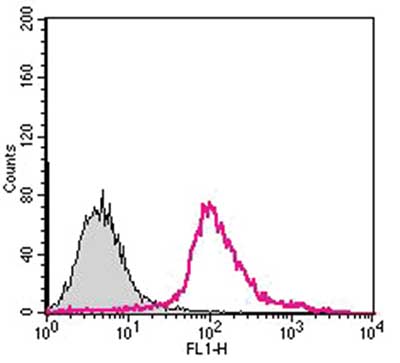
| Name | Datasheet | Packsize | Order |
|---|---|---|---|
| Anti-human CD81 aptamer, Dy647 Conjugate (clone 2015) | - | 100 tests | View |
| Anti-human CD81 aptamer, TAMRA Conjugate (clone 2015) | 100 tests | View | |
| Anti-human EGFR aptamer, Dy647 Conjugate (clone 2369) | 100 tests | View | |
| Anti-human EGFR aptamer, TAMRA Conjugate (clone 2369) | - | 100 tests | View |
| Anti-human EphA2 aptamer, Dy647 Conjugate (clone 2176) | - | 100 tests | View |
| Anti-human EphA2 aptamer, TAMRA Conjugate (clone 2176) | - | 100 tests | View |
| Anti-human HGFR aptamer, Dy647 Conjugate (clone 2308) | - | 100 tests | View |
| Anti-human HGFR aptamer, TAMRA Conjugate (clone 2308) | - | 100 tests | View |
| Anti-human ICAM-2 aptamer, Cy3 Conjugate (clone 2296) | - | 100 tests | View |
| Anti-human ICAM-2 aptamer, Cy5 Conjugate (clone 2296) | - | 100 tests | View |
| Anti-human ICAM-2 aptamer, Dy647 Conjugate (clone 2296) | - | 100 tests | View |
| Anti-human ICAM-2 aptamer, TAMRA Conjugate (clone 2296) | - | 100 tests | View |
| Human anti-CD81 Cy3-aptamer (clone 2015) | - | 100 tests | View |
| Human anti-CD81 Cy5-aptamer (clone 2015) | - | 100 tests | View |
| Human anti-CD81 FITC-aptamer (clone 2015) | 100 tests | View | |
| Human anti-EGFR Cy3-aptamer (clone 2369) | - | 100 tests | View |
| Human anti-EGFR Cy5-aptamer (clone 2369) | - | 100 tests | View |
| Human anti-EGFR FITC-aptamer (clone 2369) | 100 tests | View | |
| Human anti-EphA2 Cy3-aptamer (clone 2176) | - | 100 tests | View |
| Human anti-EphA2 Cy5-aptamer (clone 2176) | - | 100 tests | View |
| Human anti-EphA2 FITC-aptamer (clone 2176) | - | 100 tests | View |
| Human anti-HGFR Cy5-aptamer (clone 2308) | - | 100 tests | View |
| Human anti-HGFR FITC-aptamer (clone 2308) | - | 100 tests | View |
| Human anti-ICAM-2 FITC-aptamer (clone 2296) | 100 tests | View | |
| Human anti-IGF-1R Cy3-aptamer (clone 2293) | - | 100 tests | View |
| Human anti-IGF-1R Cy5-aptamer (clone 2293) | - | 100 tests | View |
| Human anti-IGF-1R FITC-aptamer (clone 2293) | - | 100 tests | View |
| Human anti-INSR Cy3-aptamer (clone 1652) | - | 100 tests | View |
| Human anti-INSR Cy5-aptamer (clone 1652) | - | 100 tests | View |
| Human anti-INSR FITC-aptamer (clone 1652) | 100 tests | View | |
| Human anti-VEGFR1 Cy3-aptamer (clone 2033) | - | 100 tests | View |
| Human anti-VEGFR1 Cy5-aptamer (clone 2033) | - | 100 tests | View |
| Human anti-VEGFR1 FITC-aptamer (clone 2033) | 100 tests | View | |
| Human anti-VEGFR2 Cy3-aptamer (clone 2041) | - | 100 tests | View |
| Human anti-VEGFR2 Cy5-aptamer (clone 2041) | - | 100 tests | View |
| Human anti-VEGFR2 FITC-aptamer (clone 2041) | 100 tests | View |
AptoPrep™ Cell Isolation Kit
AMSBIO offers the user-friendly AptoPrep™ Cell Isolation Kit for your cell isolation needs. Utilizing the specificity of aptamers to target cells, AptoPrep™ allows for the convenient isolation/elution of a particular cell from complex cell samples.
Benefits
- Fast, easy-to-use kit: Positive isolation in as little as 30 min. Released cells from bead are obtained in as little as 1 hour
- Complete kit- biotinylated aptamer, streptavidin magnetic bead, and buffers are supplied for your convenience, increasing consistency and reliability
- High specificity, yield, purity and viability
- Mild and unique cell releasing technology allows you to isolate beads and aptamer-free cells. The isolated bead-free cells are ready for flow cytometry analysis and downstream molecular studies
- No columns required- saves time and money, and your cells are not exposed to the stress of being passed through a dense column
- Convenience in handling and longer shelf life
As well as biotinylated aptamer, we supply kits with FITC dye conjugated biotin aptamer, allowing you to perform the cell isolation and flow cytometry analysis simultaneously. Our bi-labeled aptamers have FITC at the 5’-end to monitor protein expression by flow cytometry and biotin at the 3’-end to separate target cells.
| Name | Datasheet | Packsize | Order |
|---|---|---|---|
| Anti-ICAM2 aptamer, Magnetic Cell Isolation Kit (bi-labelled) | 40 reactions | View | |
| Anti-ICAM2 aptamer, Magnetic Cell Isolation Kit | 40 reactions | View | |
| EGFR (ErbB1) Bi-labelled, Magnetic Cell Isolation Kit | 40 reactions | View | |
| EGFR (ErbB1) Mono-labelled, Magnetic Cell Isolation Kit | 10 reactions | View | |
| EGFR (ErbB1) Mono-labelled, Magnetic Cell Isolation Kit | 40 reactions | View | |
| ErbB2 (Her2) Bi-labelled, Magnetic Cell Isolation Kit | 40 reactions | View | |
| ErbB2 (Her2) Mono-labelled, Magnetic Cell Isolation Kit | 40 reactions | View |
